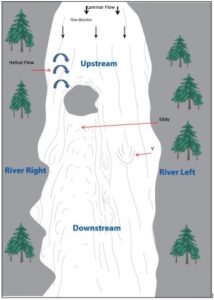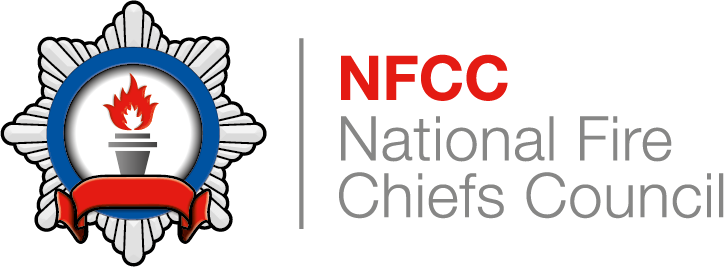Using common terminology when conducting briefings, debriefings and operating near water is vital, to ensure messages are understood.
When working near, on or in flowing water, personnel are often facing the opposite direction to spotters and may be working on different riverbanks. Upstream is the area closer to the source of the flow and downstream is the direction of flow of the water. To avoid confusion downstream is always considered to be forward, river right is the right-hand side when facing downstream and river left the left-hand side. This would be especially applicable for tidal rivers where the direction of flow may change.

Figure: Diagram demonstrating terminology used for flowing water
Further information on river terminology and hydrology, such as laminar flow and helical flow, can be found on this website.
Communication with personnel committed to the water can be difficult. The noise of moving water and the distance between personnel may make verbal communication between personnel difficult. Although waterproof communication equipment is available, it is often not appropriate for swimmers, due to the effects of the water, personal protective equipment (PPE) and levels of exertion.
Hand and whistle signals
To ensure interoperability and joint understanding between teams regardless of their agency, it is essential that all teams use a standard set of signals for communication prior to entering the hazard area. The Department for Environment, Food & Rural Affairs (Defra) Flood rescue concept of operations (FRCO) (page 39) provides a list of standard hand signals and whistle blasts that will assist with communication for emergency responders when working near, on or in water.
If the standard hand or whistle signals are inappropriate for a specific task or incident, variations should be established and confirmed with all emergency responders.
Radios
A consideration for communicating with other agencies that may be involved in water rescue may assist in improved interoperability. For example, His Majesty’s Coastguard (HMCG), other MCA assets and various rescue organisations use very high frequency (VHF) radios.
